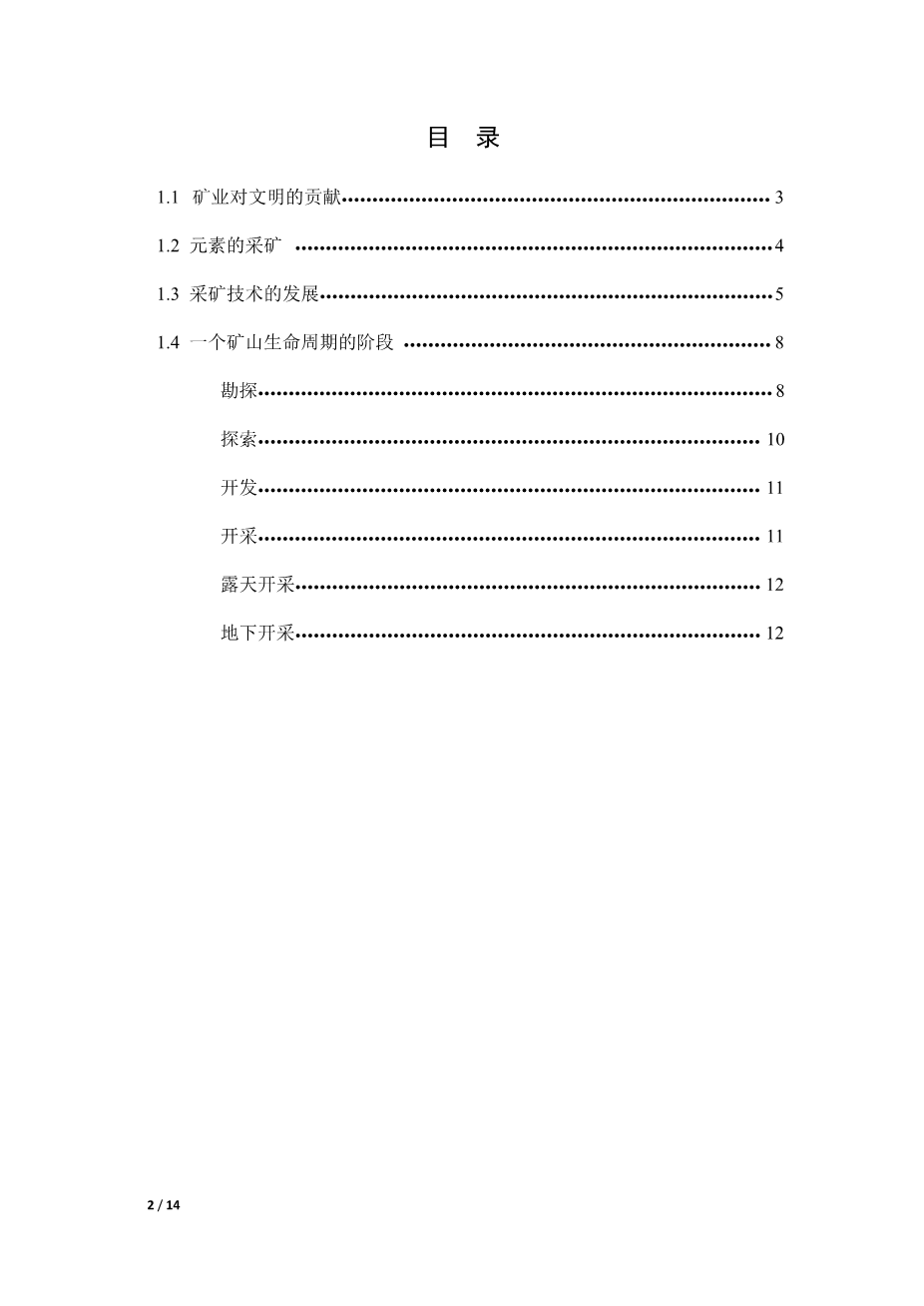1 Introduction to Mining
1.1 Miningrsquo;s Contributions to Civilization
Mining may well have been the second of man#39;s earliest endeavors-granted that agriculture was his first. The two certainly rank together as the primary or basic industries of human civilization.
Another way of expressing the fundamental importance of mining in both ancient and modern culture is to recall that nature provides only limited sources or ways to generate new wealth (Beall, 1973). In addition to parentage, they consist of mining and agriculture (which includes farming, hunting, fishing, husbandry, and forestry).
Since prehistoric times, mining has been integral and essential to man existence (Madigan, 1981). Here the term mining is used in its broadest context as encompassing the extraction of all naturally occurring mineral substances-solid, liquid, and gas-from the earth for utilitarian purpose. By utilitarian we mean those essential human needs and desires that have been uniquely met by minerals down through the ages. The most prominent are identified in table1.1.
Table 1.1 Manrsquo;s uses of minerals
|
Need or Use |
Purpose |
Age |
|
Tools and utensils Weapons Ornaments and decoration Currency Structures and devices Energy Machinery Nuclear fission |
Food, shelter Hunting, defense, warfare Jewelry, cosmetics, dye Monetary exchange Shelter, transport Heat, power Industry Power, warfare |
Prehistoric Prehistoric Ancient Early Early Medieval Modern Modern |
In fact, most of the cultural ages of man are associated with and identified by minerals or their derivatives. They include the Stone Age (prior to 4000 B. C.), the Bronze Age (4000 to 1500 B.C.), the Iron Age (1500 B.C to A.D 1780), the Steel Age (1780 to 1945), and the Nuclear Age (since 1945). Nor it coincidental that many milestones in human history-Marco Polo journey to China, Vasco da Gama#39;s voyages to Africa and India, Columbusrsquo;s discovery of the New World, and the modem gold rushes that led to the settlement of California, South Africa, Australia, the Canadian Klondike and Alaska—were achieved with minerals as the prime incentive or goal (Rickard, 1932).
It is also demonstrable that minerals and mining have been associated with the ascendancy of the great civilizations of history. Indeed, the far-flung expansions of the Roman Empire into Spain and Britain, the conquest of North and South America by the Spanish, French, and English, and the colonization of Africa and parts of Asia by a variety of European powers were fueled by the lust for mineral wealth. A different sort of modern empire—an economic cartel, the Organization of Petroleum Exporting Countries (OPEC)—exists to control petroleum prices and supplies in an awe-some exercise of mineral might.
1.2 Elements of Mining
There are various terms and expressions unique to mining that characterize it as a technical field. The novice is advised to 'master the language' early, to become familiar with it without resorting to rote memorization. Most terms are introduced selectively in the text that follows, but some are general and best defined now. For a complete glossary of mining terminology, see a standard reference (e.g., Thrush, 1968; Gregory, 1983).Three basic definitions are closely related:
Mine: an excavation made in the earth to extract minerals.
Mining: the activity, occupation, and industry concerned with the extraction of minerals.
Mining engineering: the art and science applied to the processes of mining and the operation of mines.
Some distinguish various materials mined. Geologically, one distinguishes between the following:
Mineral: a naturally occurring substance, usually inorganic, having a definite chemical composition and distinctive physical characteristics.
Rock: an assemblage of minerals.
Economically, the distinction made between minerals is the following:
Ore: mineral that has sufficient utility and value to be extracted at a profit waste or gangue: mineral that lacks utility and value when mined gangue is more intimately associated with ore than is waste)
When both geologic and economic relationships are involved, the distinguishing terms are the following:
Mineral deposit: geologic occurrence of minerals in relatively concentrated form.
Ore deposit: economic occurrence of minerals that can be extracted at a profit.
A further convenient subdivision of commercial minerals, into three main categories, is made on the basis of primary constituent and usage Metallic ores include ores of the ferrous metals (iron, manganese, molybdenum, and tungsten); base metals (copper, lead, zinc, and tin); precious metals (gold silver and platinum); and radioactive metals (uranium, thorium, and radium). Nonmetallic ores consist of industrial minerals such as phosphate potash, stone, sand, gravel, sulfur, salt, and industrial diamonds The mineral fuels, sometimes called fossil fuels, include coal, petroleum, natural gas, uranium, and several less common, marginal sources (lignite oil shale tar sand, and coal bed methane). It should be noted that, while an offshoot of mining, the activity associated with the extraction of petroleum and natural gas has now evolved into a separate industry with a specialized technology of its own.
The essence of mining in extracting mineral from the earth is to drive or construct an excavation, a means of entry, from the existing surface to the mineral deposit. (When the value of the mineral is established with some confidence, usage of the terms ore and ore deposit is preferred, except that coal a
全文共30818字,剩余内容已隐藏,支付完成后下载完整资料

英语原文共 14 页,剩余内容已隐藏,支付完成后下载完整资料
资料编号:[12509],资料为PDF文档或Word文档,PDF文档可免费转换为Word


